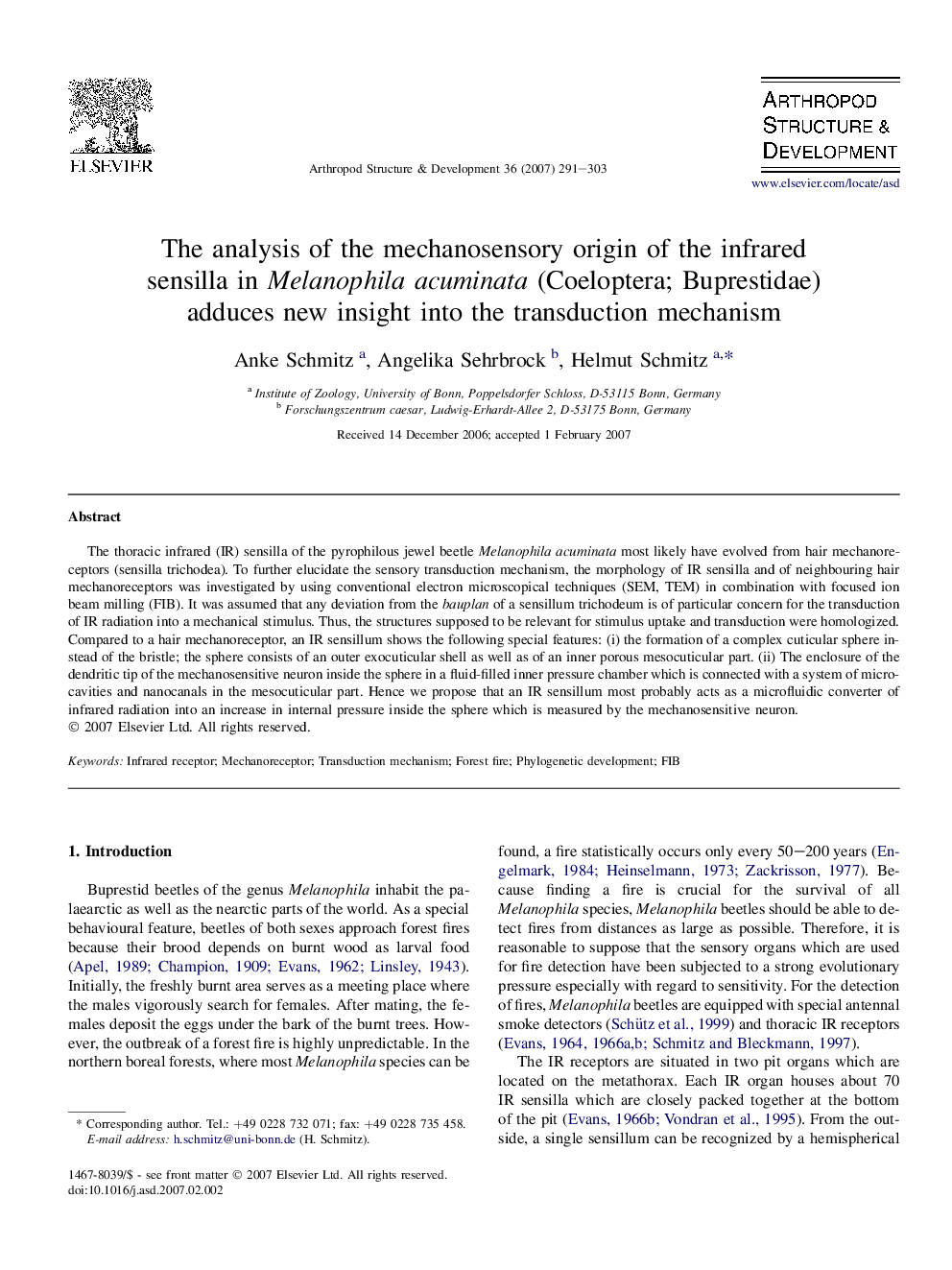| Article ID | Journal | Published Year | Pages | File Type |
|---|---|---|---|---|
| 2779081 | Arthropod Structure & Development | 2007 | 13 Pages |
The thoracic infrared (IR) sensilla of the pyrophilous jewel beetle Melanophila acuminata most likely have evolved from hair mechanoreceptors (sensilla trichodea). To further elucidate the sensory transduction mechanism, the morphology of IR sensilla and of neighbouring hair mechanoreceptors was investigated by using conventional electron microscopical techniques (SEM, TEM) in combination with focused ion beam milling (FIB). It was assumed that any deviation from the bauplan of a sensillum trichodeum is of particular concern for the transduction of IR radiation into a mechanical stimulus. Thus, the structures supposed to be relevant for stimulus uptake and transduction were homologized. Compared to a hair mechanoreceptor, an IR sensillum shows the following special features: (i) the formation of a complex cuticular sphere instead of the bristle; the sphere consists of an outer exocuticular shell as well as of an inner porous mesocuticular part. (ii) The enclosure of the dendritic tip of the mechanosensitive neuron inside the sphere in a fluid-filled inner pressure chamber which is connected with a system of microcavities and nanocanals in the mesocuticular part. Hence we propose that an IR sensillum most probably acts as a microfluidic converter of infrared radiation into an increase in internal pressure inside the sphere which is measured by the mechanosensitive neuron.
